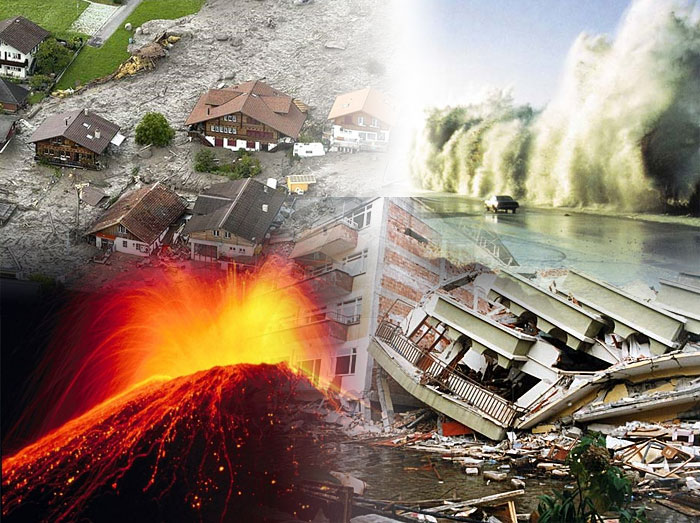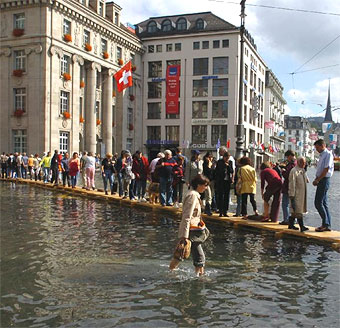No-one can predict the future accurately.
But we all can plan and prepare for it.
Getting better prepared and creating networks of support that build community resilience are crucial so that it does NOT end up as a case of aid versus preparedness as I wrote earlier.
So, what is it then that you must plan and prepare for?
Different emergencies or disasters call for different responses. Some of these are tackled in the scenarios at the preparedness hub. However, what sometimes gets overlooked this way is that there are common threads running through all of these. It has to do with consequences rather than with causes of emergencies and disasters and that is a good way to talk about preparedness, especially with people that are new to the topic. So, what it all boils down to is that you must …
be prepared for: delays in getting help
It’s not that the emergency services don’t want to get to you in a disaster but the same things that stop you also affect them: road closures, lack of communication, severe weather conditions … not to mention the many people that will want assistance all at the same time.
@BBCCornwall Live from Coverack. A disaster for this beautiful Cornish village. pic.twitter.com/WaekB1YdWi
— Lizard Hol Cottages (@lizardpeninsula) July 18, 2017
Driver Thomas Duffield was stuck in flooded bus with pupil for two hours before rescued in Coverack. pic.twitter.com/3hbbJ7fzjM — Jon Kay (@jonkay01) July 18, 2017
The emergency services and local authorities are mandated by law to serve, survey and respond over an entire area and provide the greatest good for the greatest number of people. Naturally, they cannot get to everyone right away so there will be a delay in help. That is why you need to be able to take care of yourself at least for some time.
There is a lot you can do for self-reliance and to get better prepared. The general recommendation is to stock a minimum of three days, or in other words 72 hours’ worth of supplies, essentially non-perishable food, clean water and medications to shelter-in-place as well as an emergency grab bag for safe evacuation. What that looks like, check out the blog series on safe evacuation; especially ‘mass’ evacuation and why ‘self’ evacuation preparedness makes a lot of sense.
With this, you’re off to a great start but keep in mind that the more you prepare and get equipped the better off you will be in a real disaster or emergency. Find out more about how to build your own emergency kit and check out the survival kit list.
be prepared for: road closures
Flooding, landslides etc. can collapse roads and bridges and affect how you can move around with public transport and your own vehicle. Always keep a half tank of fuel in your car and spare road maps as part of your car safety kit in case GPS is disrupted and you are forced into unfamiliar areas.
🌊 Is your area prone to flooding?
Information is available here if you have any concerns: https://t.co/0iWXyVFBnb@ScottishEPA #PlanAhead pic.twitter.com/xSDqgWgSLV
— Traffic Scotland (@trafficscotland) February 26, 2017
In the event of a mass evacuation, be prepared for a long journey. It may well end up looking like this
Nine miles in five hours. That’s how slow traffic is moving as residents of Charleston, South Carolina evacuate. Video: Jason Hall pic.twitter.com/xAYHIu6yTy — WeatherNation (@WeatherNation) October 6, 2016
be prepared for: power outages
Power outages mean no ATMs or cash dispensers, no petrol pumps at your gas station, your fridge/freezer stops working and food goes off (Emergency Preparedness and FoodSafety), the batteries in your phone and gadgets don’t get charged, no TV or internet … Following on from the earlier example of the recent flash flooding in Coverack, it appears the community there knows that scenario well …
Coverack hit by power cut since 2am. Half village running off generators,other half still off.Paris Pub got power & feeding most of village
— Lizard Hol Cottages (@lizardpeninsula) January 1, 2012
Read more about preparedness for power cuts, brown outs and black outs and also check out food security especially for communities.
be prepared for: lack of clean water
Water mains bursts and flooding can mean outages and contamination of your water supply. In an emergency, shut off your supply to keep your clean water in and dirty, unsafe water out. Read more about utilities shut off safety. Your home may already have ’emergency stores’ i.e. top reservoirs of toilets, boilers, garden reservoirs etc. but keep in mind that water purification is essential for health.
UK floods: Buckskin sewage contamination continues http://t.co/vm6PnITWcM pic.twitter.com/zTFk6lfjYG — BBC Hampshire & IoW (@BBC_Hampshire) February 19, 2014
Minimum clean water supplies are usually given as 1 gallon (approx. 4.5 lt) per person per day for basic needs such as drinking, food preparation and hygiene. If you have pets, count each one as you would a person for extra reserves.

be prepared for: limited or no communication
Communication systems may get knocked out which means you may be unable to call for help or get information the usual way. It also means you may lose touch with loved ones. Having a communications plan and preparedness measures in place is vital. Check out our free template on the preparedness hub to get you started so that it does not come to this …
be prepared for: property damage
If you’re lucky, property damage is minimal which means you can shelter-in-place and ride it out. However, property damage may be extensive which means you can no longer safely stay and must evacuate and shelter elsewhere.
The most common damage to property is from fire. There is a lot you can do for better fire safety and fire preparedness. Other common property damage may result from flooding or wind. Take a look at his short video showing the impact of different wind speeds. It may be set in the tropics with palm trees but applies to other settings too.
be prepared for: living in a shelter
Living in a shelter is not like living at home. The better prepared you are the more comfortable you will be. Living in a shelter can look very different depending on circumstances and duration. You may choose to provide your own shelter by staying with loved ones, moving into a hotel or even camp outdoors. Alternatively, you may be given shelter provided by the authorities and volunteers. Often, this will look similar to this example in the aftermath of the Grenfell Tower Disaster
We are making beds for people anyone who needs a bed or emergency housing Come to @WestwaySports W106RP #Grenfelltower #Westlondonstrong RT pic.twitter.com/EqPIhyVLSL
— Noel Clarke (@NoelClarke) June 14, 2017
be prepared for: a new ‘normal’ Depending on the severity of the emergency or disaster, clean-up and recovery can take a long time. In many instances lives are disrupted for extended periods of time and never get quite back to how things were before. A ‘new normal’ eventually settles in as people piece their lives back together. What that may look like for you is something you can help determine. Start planning and preparing today so that you can be better prepared tomorrow. Events like flooding are sadly the new reality as we all face and must prepare for a world that’s more than 2° C warmer.
Be prepared, not scared. Start today for a safer and more secure tomorrow.
Monika
If you like this post, please share it to help raise awareness for Emergency and Disaster Preparedness.
Tweet thank you for sharing!
For more EVAQ8 blog simply use the right hand navigation. For emergency kits and practical resources use the top navigation. For FREE resources head over to our Preparedness Hub and find out why we use humour. If you like this post, please share it to help raise awareness for Emergency and Disaster Preparedness. Thank you!
Find EVAQ8 on social media, like and follow us!
Coverack resident Mary spotted her kitchen sink among flood debris on @BBCBreakfast People here amazingly resilient pic.twitter.com/mtaNOCn7a4 — Jon Kay (@jonkay01) July 19, 2017




 You would say yes, wouldn’t you, intuitively?
You would say yes, wouldn’t you, intuitively?
 So called ‘natural disaster’ data is readily available nowadays but the term is actually a bit of an oxymoron. Natural events trigger a range of ‘disasters’, the resulting damage is largely the result of lack of planning and poor development which ends up putting property and people at risk.
So called ‘natural disaster’ data is readily available nowadays but the term is actually a bit of an oxymoron. Natural events trigger a range of ‘disasters’, the resulting damage is largely the result of lack of planning and poor development which ends up putting property and people at risk. 












